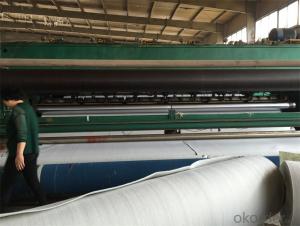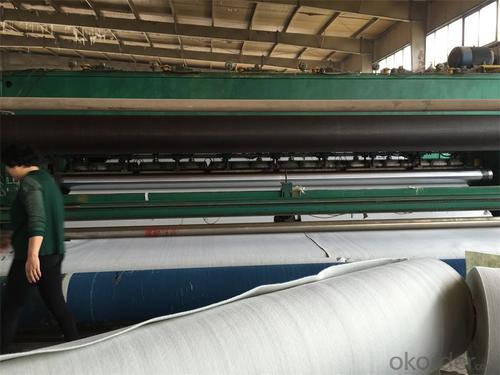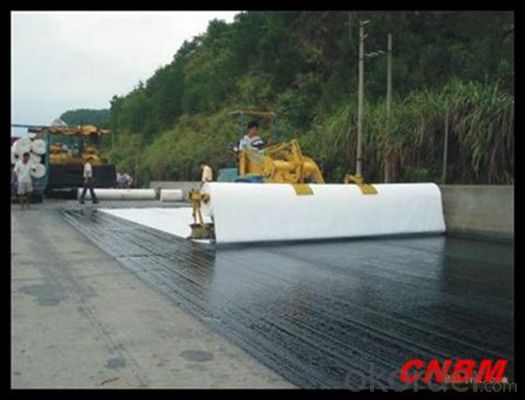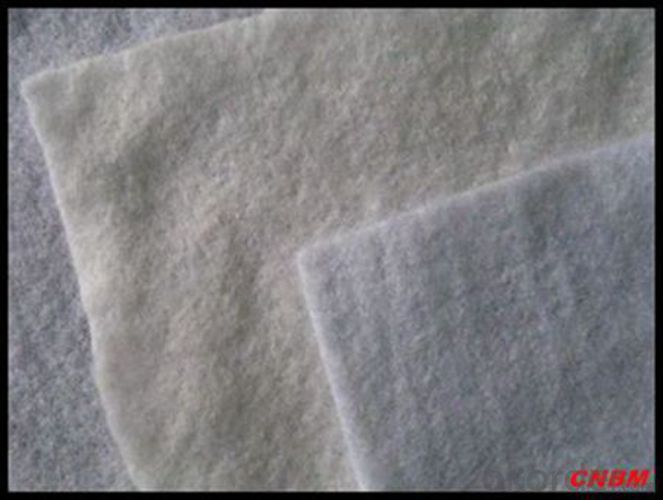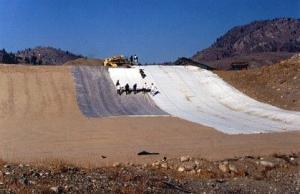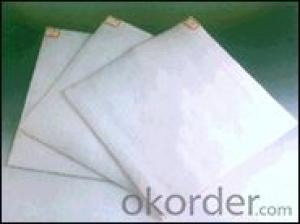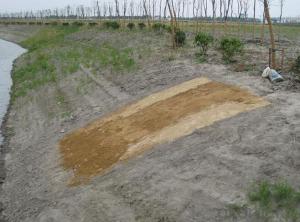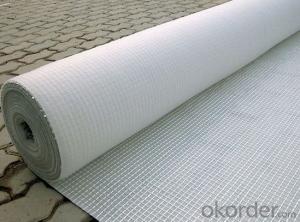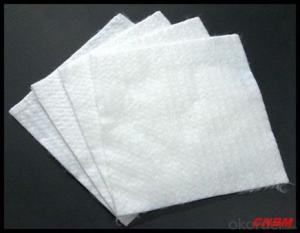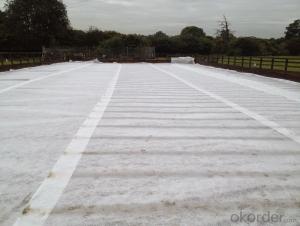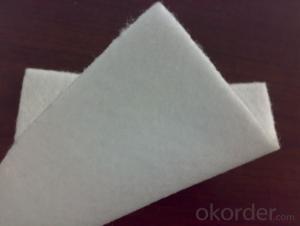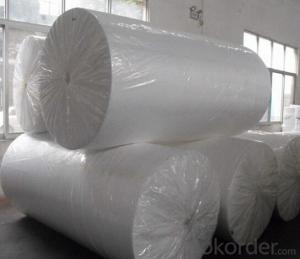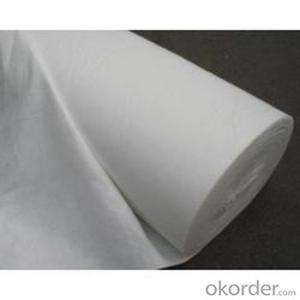Commercial Geotextile Fabric - Best Quality Polypropylene Filter Spunbond Nonwoven Geotextiles
- Loading Port:
- China main port
- Payment Terms:
- TT OR LC
- Min Order Qty:
- 4000 m²
- Supply Capability:
- 1000000 m²/month
OKorder Service Pledge
OKorder Financial Service
You Might Also Like
Specification
Product Introduction
1:Use of polyester staple fiber nonwoven fabric with different physical properties (particle size, distribution, consistency and density, etc.) of the building materials (such as soil and sand, soil and concrete, etc.) in isolation. Make no loss between two or more materials, not mixed, maintains the whole structure and function of material, to reinforce structure load bearing capacity.
Characteristics:
Easy process and high output rates
Excellent distribution of carbon black
Consistent quality and low failure rate
Excellent resistance and good waterproof ability
Good welding
Main Export Markets:
Asia
Australasia
Central/South America
Eastern Europe
Mid East/Africa
North America
Western Europe
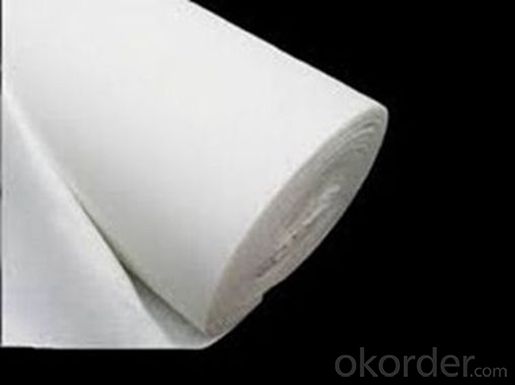
Packaging & Shipping
Packing: PLASTIC FILM INSIDE, AND WOVEN BAG OUTSIDE
Shipping: About 15 days after receipt the deposit
geotextile fabric
permeability,filtration,easy for construction
ISO and CE certificate
Good quality and competitive price
Our Service
Quality assurance
1.On a regular basis or as per your request,we entrust national testing agencies to conduct quality inspections
2. Strictly in accordance with the ISO9001-2008 international quality system standard,we monitor and manage the whole process throughout production,quality testing,and measurement to ensure product quality
3. For quality-related construction delay or substandard construction(except for damage or losses due to customer’s responsibility or irresistible natural disasters),we have refunding,replacement,and repair services.We will respond to customers’ feedbacks on quality issues within 24 hours.
After-sales service
1.In order to provide customers with comprehensive technical support,we will provide technical and other related information upon request in a timely manner.
2.In required,we will appoint specialized technicians to the construction site to give technical trainings to construction people,and offer technical guidance throughout the whole construction process.
3.For damage due to shipment and delivery,after we receive the complaint,we will check the issure through provided pictures and videos.If our responsibility is confirmed,we wil offer free replacement.
4.When the construction is completed,as your request,our technical staff may participate in the final acceptance.
FAQ:
Q: What kind of payments does jenor support?
A: T/T, L/C, Cash are accepted.
Q: Do you charge for the samples?
A: Accordeing to our company policy, the samples are free, we only charge the freight fee. And we will return the freight fee during the next order.
Q: Can you produce according to customers' design?
A: Sure, we are professional manufacturer, OEM and ODM are both welcome.
Q: Do you have other products?
A: Yes, please check the pictures:
- Q: What are the long-term performance expectations for geotextile installations?
- The long-term performance expectations for geotextile installations are generally high. Geotextiles are designed to provide durable and effective solutions for various applications such as soil stabilization, erosion control, and drainage systems. With proper installation and maintenance, geotextiles can typically last for decades, providing long-lasting functionality and performance. However, specific performance expectations may vary depending on factors such as the type of geotextile, site conditions, and the intended application.
- Q: How do geotextiles improve the performance of dams?
- Geotextiles improve the performance of dams by providing reinforcement, filtration, and erosion control. They can enhance the stability of the dam structure by acting as a barrier against seepage and offering additional support. Geotextiles also act as a filter to prevent the migration of fine particles through the dam, ensuring its long-term integrity. Additionally, they help in controlling erosion by stabilizing the soil and preventing the washout of material from the dam surface.
- Q: Polypropylene geotextile and polyester geotextile with the naked eye how to distinguish
- Polypropylene compared to white, polypropylene fiber than polyester fiber density point, anti-aging anti-aging of polypropylene, polyester aging,
- Q: How do geotextiles contribute to the efficiency of drainage systems?
- Geotextiles contribute to the efficiency of drainage systems by providing two main benefits. First, they act as a filter to prevent soil particles from clogging the drainage pipes or systems, allowing for a consistent flow of water. Second, they help to distribute the water evenly across the entire drainage area, improving the overall effectiveness of the system.
- Q: How do geotextiles help in slope stabilization?
- Geotextiles help in slope stabilization by providing reinforcement and erosion control. They are placed on slopes to prevent soil erosion and the movement of soil particles, effectively stabilizing the slope. The geotextiles act as a barrier, allowing water to pass through while retaining the soil in place. This helps to prevent landslides, soil erosion, and slope failure, ensuring the long-term stability and safety of the slope.
- Q: Geotextile mouth chain suture is what kind of picture
- Hello I am a professional geotextile and other geotextile materials,
- Q: How do geotextiles help with reinforcement of geotextile containers?
- Geotextiles help with the reinforcement of geotextile containers by providing structural support and stability. They prevent soil erosion, distribute load evenly, and improve the overall strength and integrity of the container. Additionally, geotextiles act as a barrier to filter water and allow for proper drainage, preventing the buildup of hydrostatic pressure and enhancing the stability of the container.
- Q: How do geotextiles help with soil reinforcement in geogrid applications?
- Geotextiles help with soil reinforcement in geogrid applications by acting as a separation layer between the soil and the geogrid. They prevent the intermixing of different soil layers, which helps maintain the integrity of the geogrid by preventing soil displacement. Additionally, geotextiles enhance the overall performance of the geogrid by distributing the loads more evenly across the soil surface, reducing the potential for localized stress concentrations.
- Q: What is the role of geotextiles in geotechnical engineering?
- Geotextiles play a crucial role in geotechnical engineering as they are used to enhance the performance and stability of soil structures. They act as a barrier to prevent soil erosion, provide filtration to separate different soil layers, and increase the strength and stability of the soil. Additionally, geotextiles can also be used for drainage purposes, allowing water to flow through the soil while preventing the loss of fine particles. Overall, geotextiles are essential in geotechnical engineering for improving the overall effectiveness and longevity of various soil-based structures.
- Q: What is the price per square of the non-woven polyester fabric? What is the difference between the geotextile used in the building?
- About two more money it! You can search Yuan Shuqing look! Have to sell! Quite cheap!
Send your message to us
Commercial Geotextile Fabric - Best Quality Polypropylene Filter Spunbond Nonwoven Geotextiles
- Loading Port:
- China main port
- Payment Terms:
- TT OR LC
- Min Order Qty:
- 4000 m²
- Supply Capability:
- 1000000 m²/month
OKorder Service Pledge
OKorder Financial Service
Similar products
Hot products
Hot Searches
Related keywords
